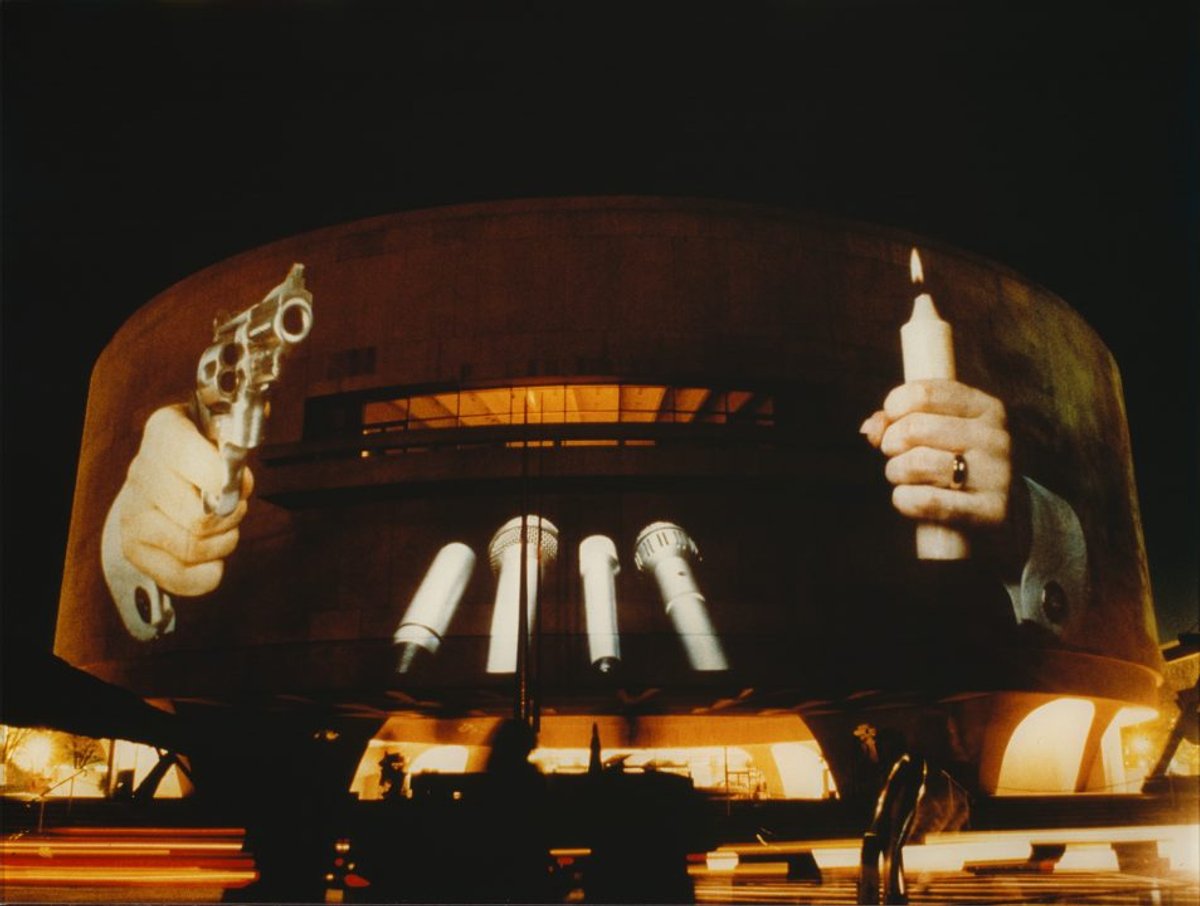The Hirshhorn Museum in Washington, DC, decided to postpone a monumental projection across its façade by the Polish artist Krzysztof Wodiczko that included an image of a gun after a school shooting in Florida killed at least 17 people on Wednesday (14 February). The site-specific work, Hirshhorn Museum, Washington, DC, 1988-2000, was restaged for the first time in 30 years on Tuesday and was meant to remain on display for three days to coincide with the opening of the exhibition Brand New: Art and Commodity in the 1980s (until 13 May). The projection was stopped immediately following the Florida shooting, but on Thursday the museum announced that it would be rescheduling it at a later date, to be confirmed shortly.
“Our hearts go out to the victims and families of today’s tragedy in Florida,” the museum posted on its website on Wednesday evening, soon after the news of the shooting broke. “Out of respect for those affected, and in sensitivity to our public, the Hirshhorn and artist Krzysztof Wodiczko will no longer be projecting his artwork on the exterior of the building.”
The three-storey-tall piece, which shows two hands holding a gun and a candle on either side of a row of microphones, was created to fit the Hirshhorn’s cylindrical façade as part of its Works series of temporary exhibition (1987-93). “The 30-year-old projection appears to me today strangely familiar and at once unbearably relevant,“ Wodiczko said in a press statement when its re-installation was announced. “More than ever before, the meaning of our monuments depends on our active role in turning them into sites of memory and critical evaluation of history as well as places of public discourse and action.”
Commentators on social media seemed to feel the same. When the Hirshhorn tweeted that it would no longer be projecting the work, a number of people disagreed with the decision. "With respect, the world needs this art installation now more than ever," said the local activist Todd Kimmelman. "Don’t you think this is the time the Members of Congress need to see that projection?" asked Guillermo Mena, a lawyer and policy leader at the National Hispanic Caucus of State Legislators.
A spokeswoman for the Hirshhorn says that as soon as the decision was made to temporarily take down the projection, "it was always the hope of the museum to restage the work at another time during the run of the exhibition". But first it had to figure out logistics and consult with the artist. “To me, the silence feels most respectful,” Wodiczko added in a statement on Thursday. “In this case, not showing the projection shows respect and sensitivity to the people who suffer from this great tragedy.” Earlier video footage of the projection is now being shown in the museum’s lobby as part of the exhibition.
The work’s imagery is based on topics that were central to the 1988 presidential election—reproductive rights and the death penalty—as well as “the power of mass media to convey ideologies at a time when cable TV was changing the media paradigm”, according to a press release. “Cars driving by on Jefferson Drive slowed down to a nervous creep. Joggers on the Mall stopped in midstride and stared,” wrote the Washington Post when the work was first unveiled in 1988. “And guests leaving an opening party at the Hirshhorn Museum and Sculpture Garden stood in the drizzling rain and said little.”
This article was updated on 15 February to include the museum's announcement that the projection would be rescheduled.


